First published November 2022 | Words and photos by Thảo Phan | 7 comments
Thảo Phan is a contributing writer for Vietnam Coracle. She is currently running TP Garden, an urban garden business in Hồ Chí Minh City, where her passions & values come together to create a healthy community & cleaner environment. Originally from Biên Hoa City, in Đồng Nai Province, she’s spent most of her adult life living in Sài Gòn, although she’d much rather be in the countryside surrounded by trees & flowers….read more about Thảo
In Vietnam, flowers are used in many dishes and drinks. Flowers are often treated like vegetables or herbs. Vietnamese cuisine utilizes edible flowers in myriad ways: as decorative garnishes, mixed together in salads and soups to add flavour, texture and colour, dried to make tea, and even cooked as the main ingredient of a dish. I’ve always liked the idea of ‘eating flowers’ – there’s something poetic, exotic and exciting about it. Flowers are healthy and aromatic, they taste great and look fantastic. This guide introduces nine commonly used edible flowers in Vietnamese food.

[Back Top]
EDIBLE FLOWERS
9 Flowers in Vietnamese Cooking
Growing up in the Vietnamese countryside in the 1990s, I used to forage in bushes and climb trees to harvest wild edible flowers for cooking. My family used these flowers for salads, soups, hotpots and stir-fry dishes. Many readers will be familiar with flowers used for Vietnamese teas, such as jasmine (lài), lotus (sen) and chamomile (hoa cúc). But fewer people will know about flowers used in Vietnamese cooking. In this guide, I introduce nine edible flowers and their related dishes, all of which I enjoyed as a child and still cook today.
CONTENTS:
1. Banana Flower (hoa chuối)
2. Pumpkin Flower (bông bí)
3. Luffa Flower (bông mướp)
4. Tonkin Jasmine (bông thiên lý)
5. Egyptian Riverhemp (bông điên điển)
6. Roselle Hibiscus (hoa bụp giấm)
7. West Indian Pea (bông so đũa)
8. Lotus (bông sen)
9. Water Lily (bông súng)
Support Vietnam Coracle
Please make a donation or become a patron if you enjoy this website. Vietnam Coracle is totally free & independent. I never receive payment for anything I write.
Thank you, Tom
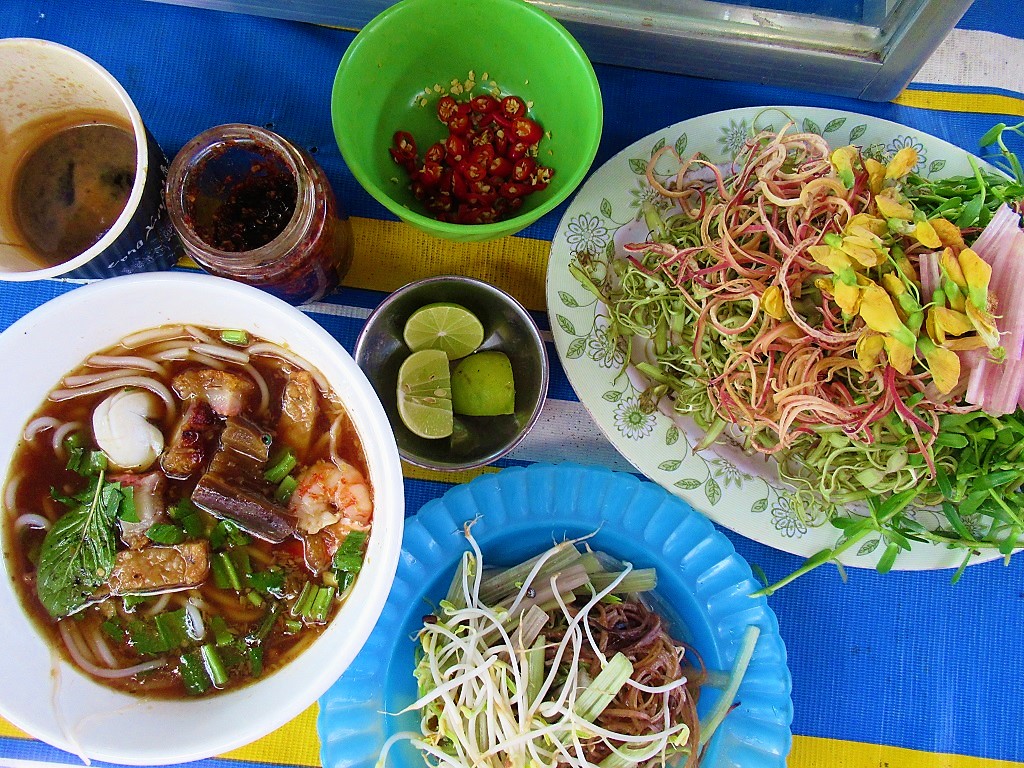
1. Banana Flower (hoa chuối)
In Vietnam, the flower of the banana plant is consumed just as much as the fruit. There are about 15 types of banana used in Vietnamese food and drink. These come in all different sizes and colours – green, yellow, purple, red and brown. However, there are only two varieties of bananas whose flowers are edible: chuối Sứ or chuối Xiêm (Siamese banana) and chuối hột (wild banana). While the flowers from other varieties are often bitter or acrid, Siamese and wild banana flowers have a mild, watery taste and crunchy texture, which make them a perfect addition to chicken salad (gỏi gà). Another common use of banana flowers is to have them in sweet and sour soup (canh chua) together with other vegetables, such as morning glory (rau muống) and water mimosa (rau nhút). But banana flowers are most commonly seen shredded into thin curls as a garnish for noodle soups. Mixed together with other herbs, the banana flower adds texture to these noodle dishes.


2. Pumpkin Flower (bông bí)
Pumpkins are eaten all over the world. However, not many people know that their flowers can be made into delicious dishes. Pumpkin blossoms are pretty and orange. The simplest and most popular way to cook pumpkin flowers in Vietnam is stir-fried with garlic (bông bí xào tỏi). Though the flower itself does not offer much flavour, the stem compensates with its sweetness and crunchy texture. Pumpkin flower soup cooked with minced pork (canh bông bí nấu thịt bằm) is another favourite dish of mine.
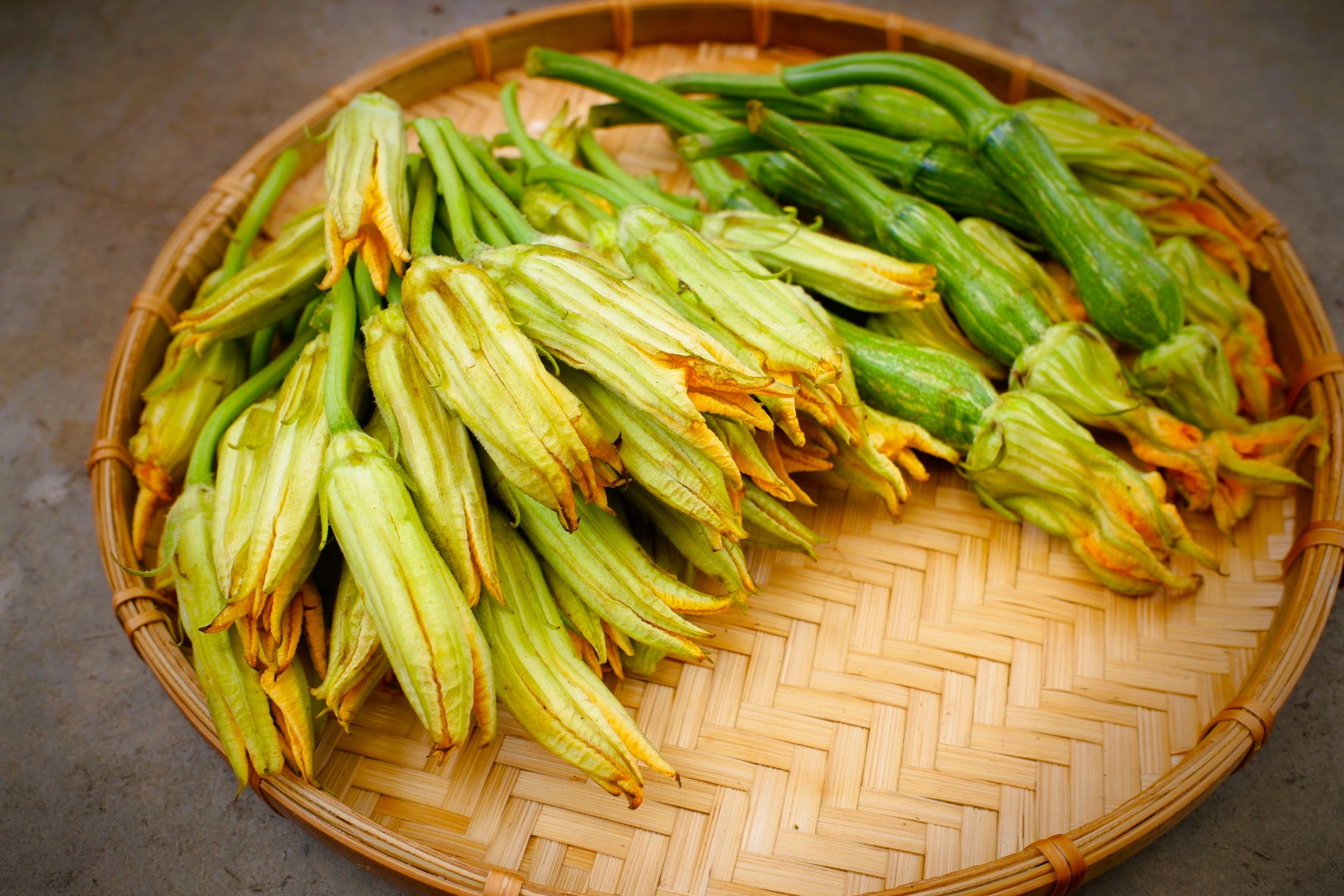

3. Luffa Flower (bông mướp)
When it comes to cooking, the Luffa fruit is so widely used throughout Vietnam that many people don’t know that its flowers and buds are also edible. Luffa flowers are big, bright and yellow; the buds are small nibs that look like green hazelnuts. Luffa flowers are just as delicious as pumpkin flowers when stir-fried with garlic (bông mướp xào tỏi), although some people might not like the slightly bitter taste of the buds the first time they try them. Luffa flowers stir-fried with beef (bông mướp xào thịt bò) and luffa flower soup with fresh shrimp (canh bông mướp nấu tôm) are two dishes you must try if you have the chance.
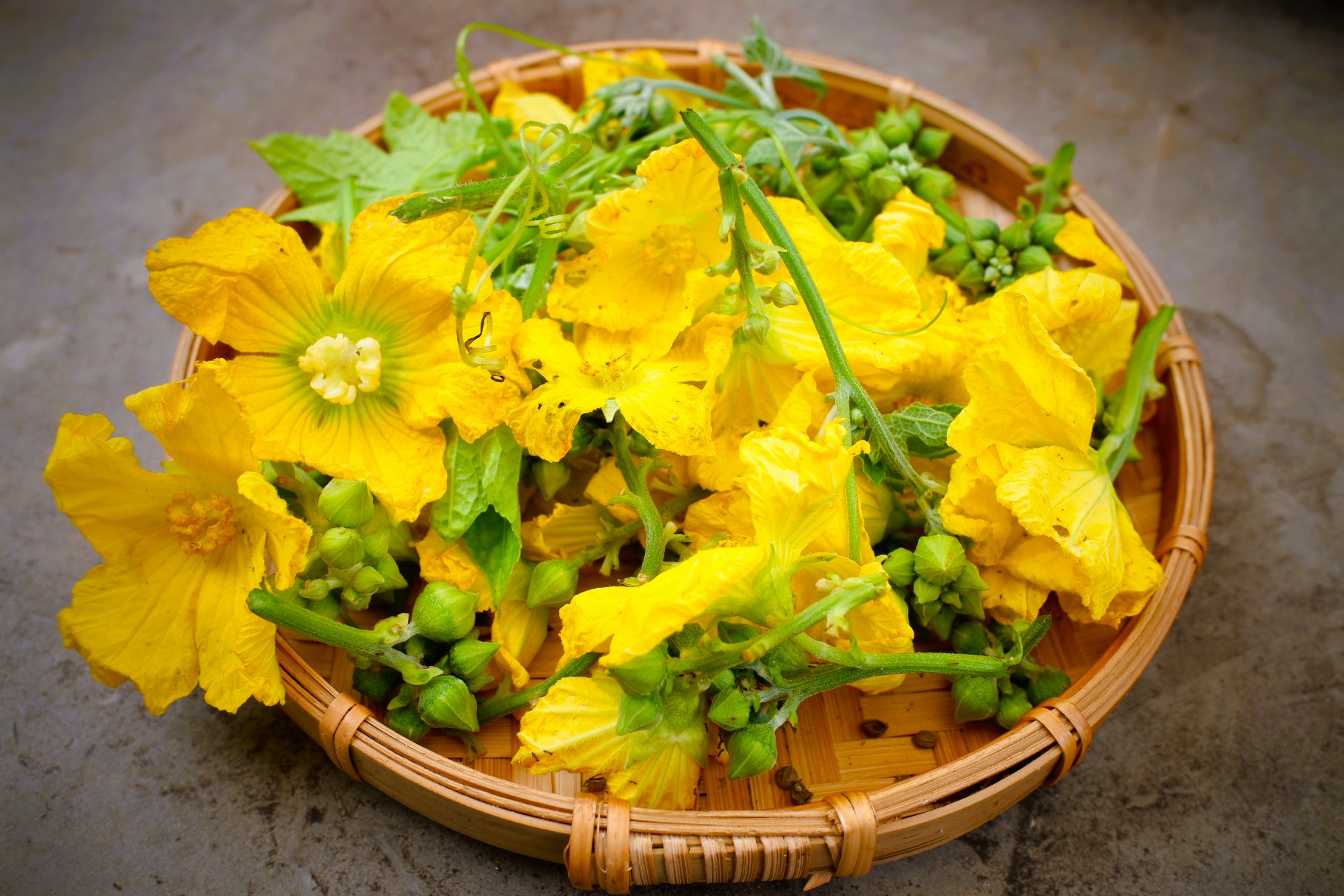
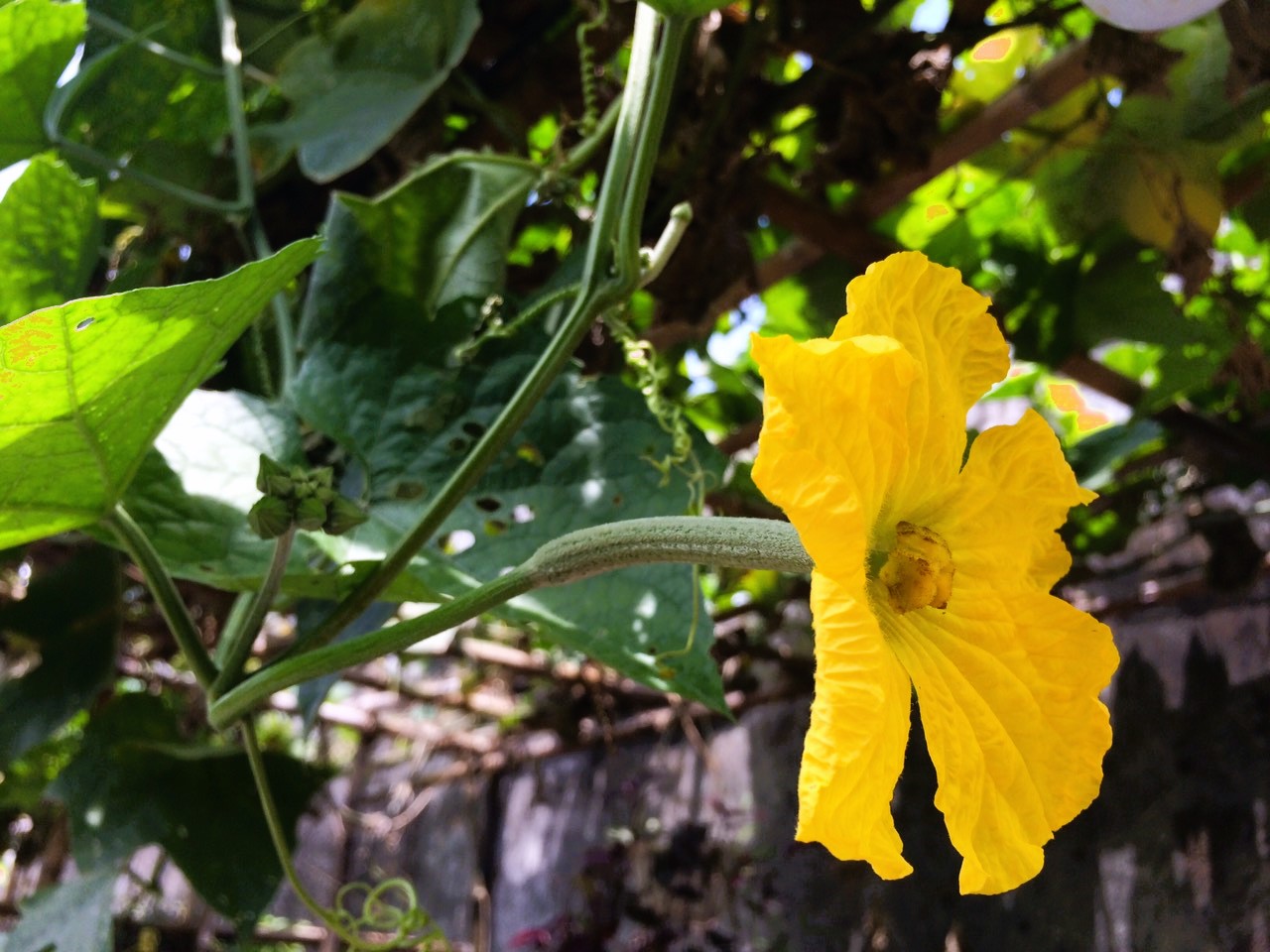
4. Tonkin Jasmine (bông thiên lý)
Originally growing in northern Vietnam (hence the name ‘Tonkin jasmine’, as the northern region was formerly known), bông thiên lý has become popular and rather expensive in the south of Vietnam, too. Not only are the flowers fragrant, they are also delicious when combined with other ingredients in cooking. The most common and probably most loved use of the flowers is to stir-fry them with beef and garlic (bông thiên lý xào thịt bò). The flowers are added right at the end of the cooking process to ensure they remain crunchy and fresh. Southern people cook a variation of the famous canh chua (sour soup) with bông thiên lý and cá hú (a freshwater species of shark catfish). I grow Tonkin creepers in my garden in Sài Gòn – not only for the edible flowers, but for the aesthetic appeal.


5. Egyptian Riverhemp (bông điên điển)
Often found submerged in shallow muddy water in the Mekong Delta region, Egyptian riverhemp is a delicate, pale yellow flower. The ‘floating season’ (August to November) in the Mekong Delta is when bông điên điển blooms, and this is also the time of year that cá linh (a small river fish in the same family as the common carp) are in abundance in the region’s waterways. These two ingredients create the famous regional dish lẩu cá linh bông điên điển (Egyptian riverhemp and mud carp hotpot). In addition, bông điên điển is served with two of the Mekong Delta’s most iconic fish noodle soups: bún cá and bún mắm. The flowers have a very mild flavour and soft texture, but their colour adds a vibrancy to these soups that’s very eye-catching.
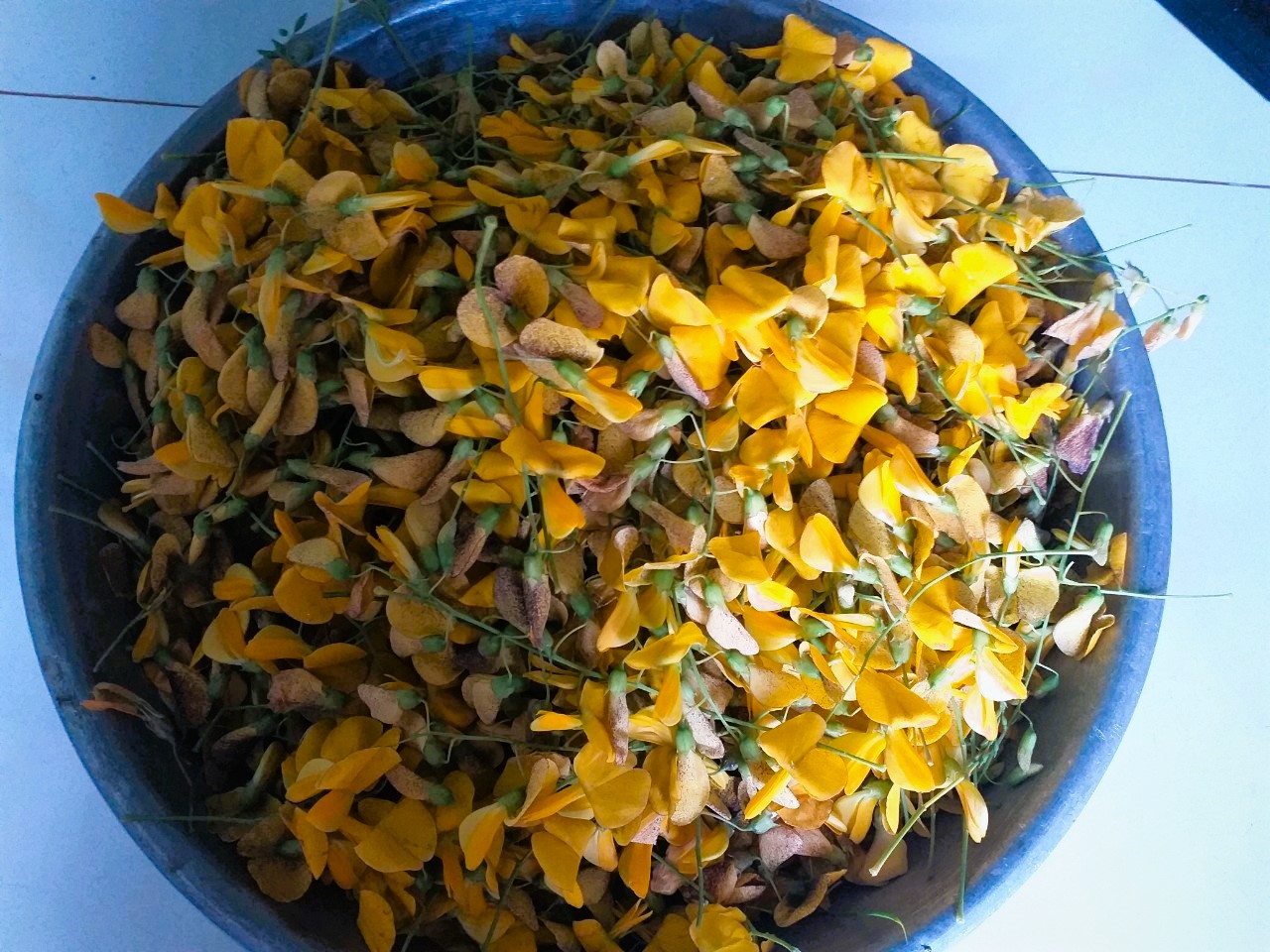
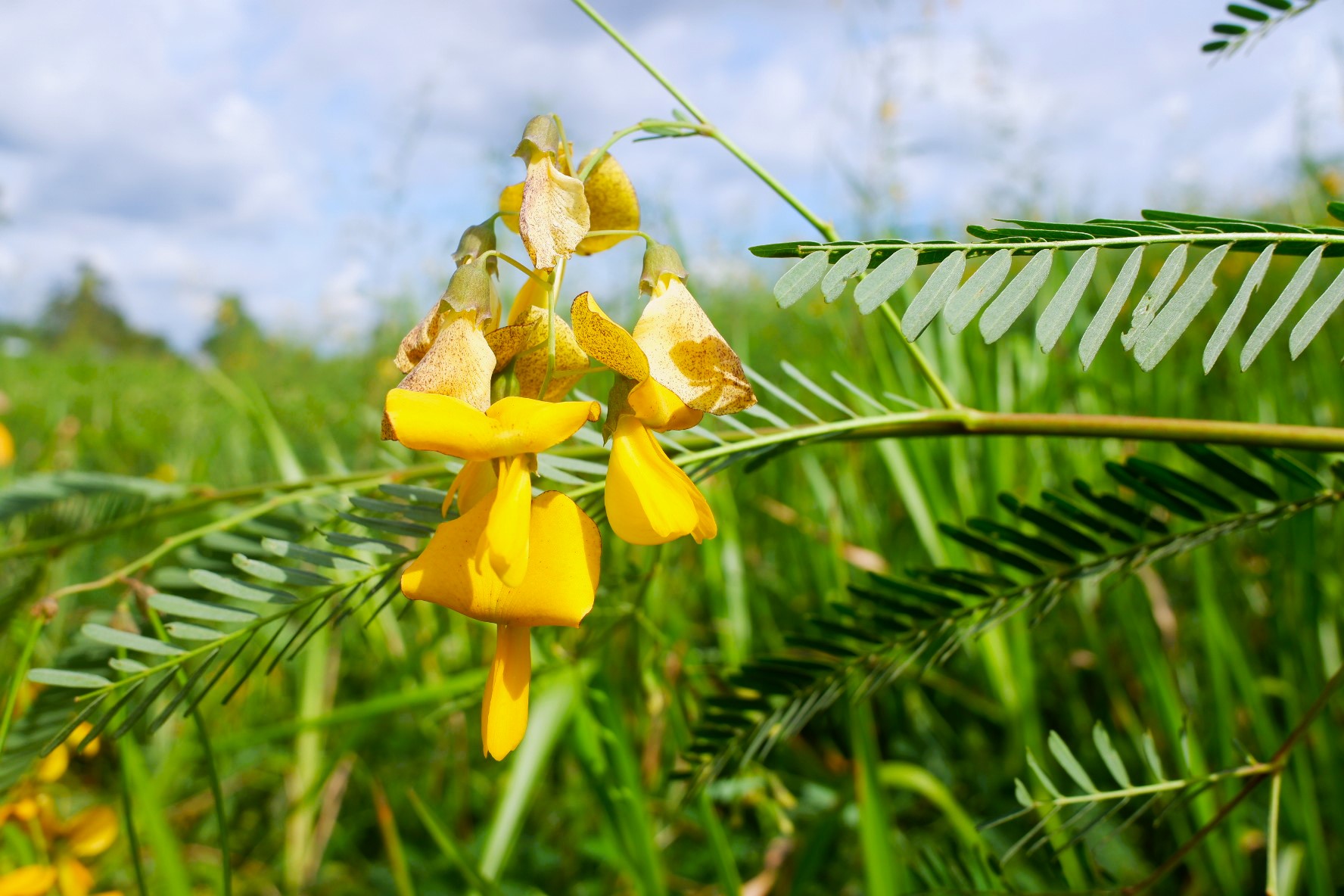
6. Roselle Hibiscus (hoa bụp giấm)
Back in the 1990s, Roselle flowers were a common sight growing wild in my hometown. I remember going into uncultivated areas near my house, picking the red sepals and young leaves from Roselle plants, and taking them back home for my mum to make canh chua (sweet and sour soup). If we had neither tamarind nor tomato to create the sour taste for the soup, we used the sepals and leaves of the Roselle plant to add sourness instead. As well as their sour flavour, the flowers have a distinctive deep red hue and look like little fruits. Because Roselle has many health benefits, today the flowers are farmed in large quantity; not for cooking but for making tea and syrup. Recently, it has become quite a popular ingredient in making kombucha and cider, too.

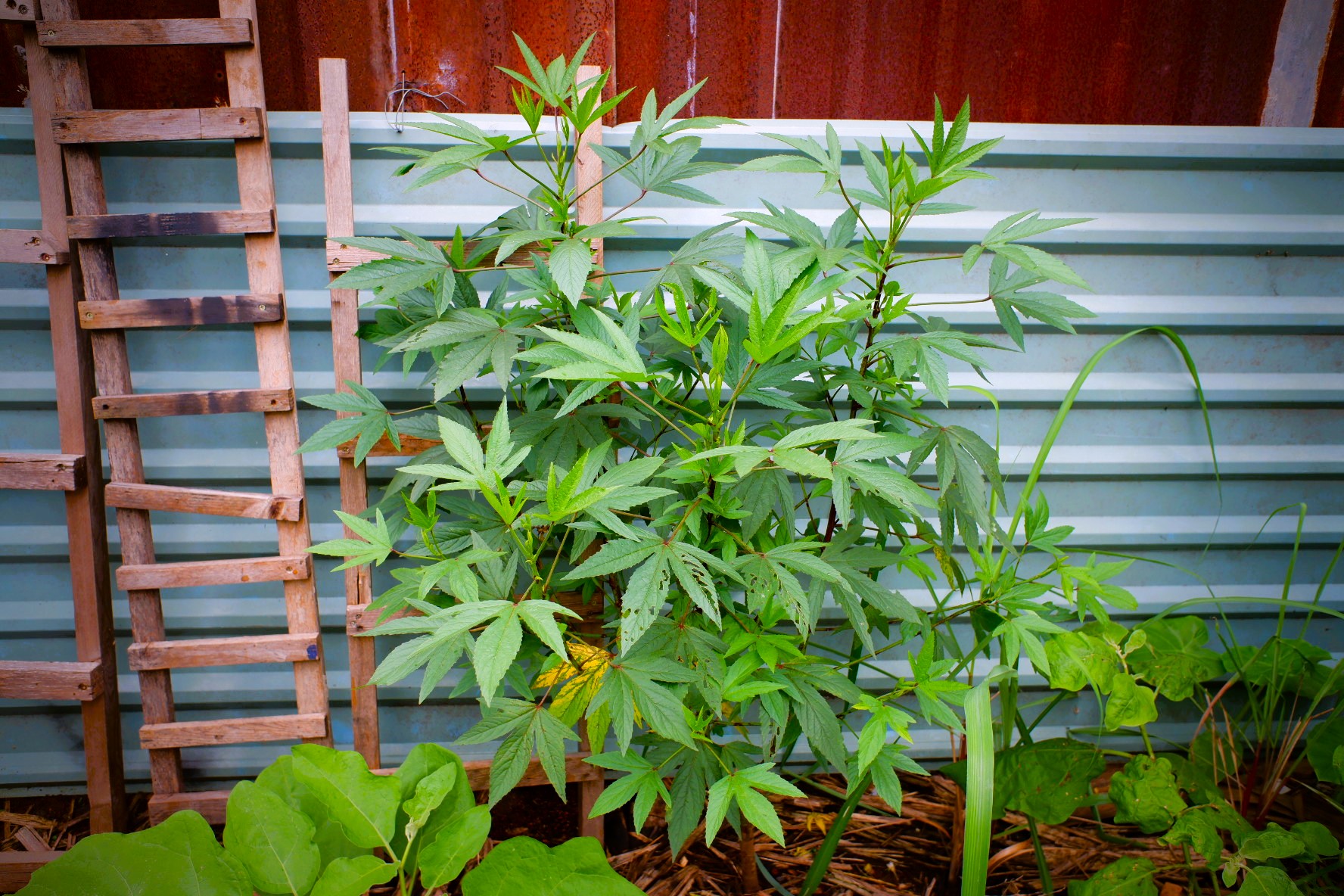
7. West Indian Pea (bông so đũa)
A beautiful, crescent-shaped white flower, bông so đũa (variously called West Indian Pea or Vegetable Hummingbird) is occasionally used to garnish hotpots and soups, such as canh chua, especially in the Mekong Delta region of Vietnam. When I was a child, I used to climb up the West Indian Pea tree to pick the flowers; either to use them for cooking or just to gaze at their whiteness with my friends. It’s been a long while since I’ve seen bông so đũa growing in the wild. But, luckily, I am still able to find the flowers in the fresh produce markets of southern Vietnam, where I buy them to cook the dishes of my childhood.
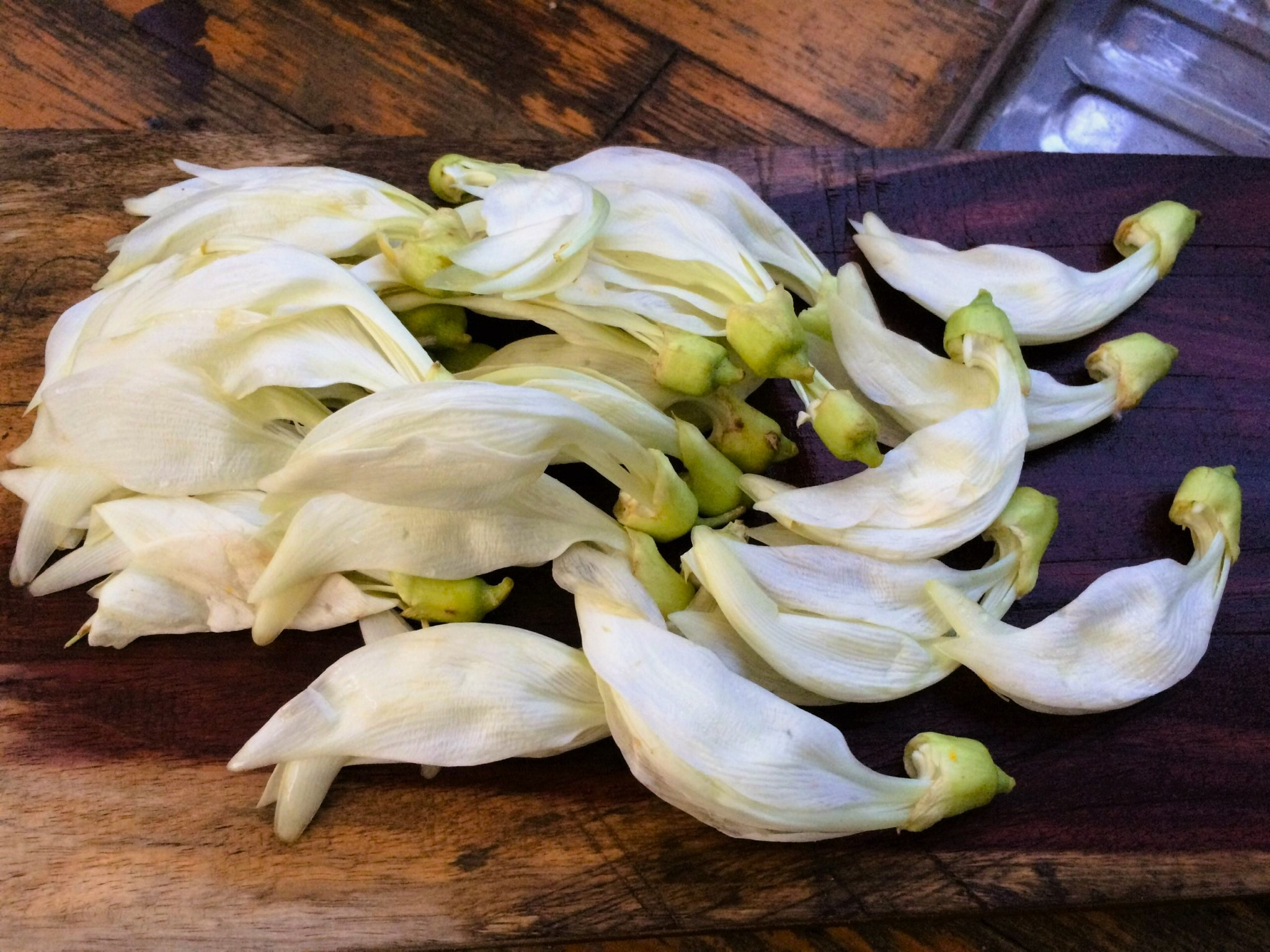

8. Lotus (bông sen)
Although not officially, the lotus is regarded as Vietnam’s national flower in the hearts of its people. Often associated with divinity, spirituality and particularly Buddhism, in the past the lotus has appeared in Vietnamese literature as a metaphor to describe the Vietnamese people themselves, particularly farmers (the dominant population for much of history) for their resilience and purity, just like the lotus flower rising from the mud without stain.
Like many Vietnamese people, the lotus is my favourite flower. No other plant or flower is as useful as the lotus, in my opinion. Apart from ornamental and culinary uses, many parts of the plant, if not all, have been utilized for traditional medicines for centuries. In Vietnam, lotus root (ngó sen), lotus rhizome (củ sen) and lotus seeds (hạt sen) are commonly used for cooking, such as salads (gỏi) and desserts (chè). Lotus flowers are often used for food decoration and for flavouring tea. The tea (trà sen) is believed to help relax the blood vessels, thus improving circulation. Though not as common, lotus petals can be deep-fried with wheat flour and egg to make a crunchy snack.
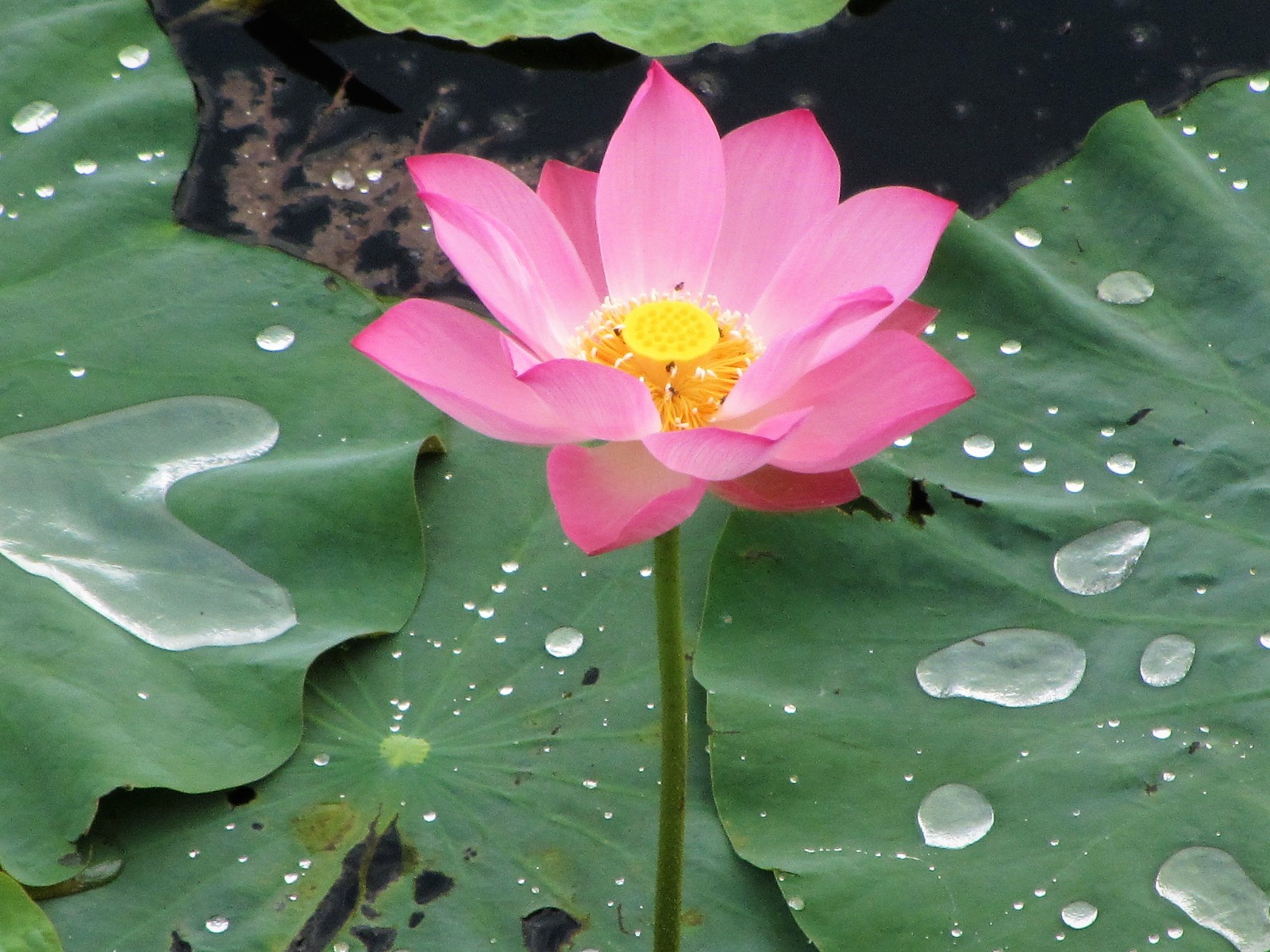

9. Water Lily (bông súng)
At first glance, water lilies look like lotus flowers and can cause some confusion for those who first encounter these aquatic plants. However, water lilies are smaller and are not as fragrant as lotus flowers. In addition, both can be differentiated by their colours: lotus flowers are usually light pink or white, while water lilies can have numerous colours, from the common pink, purple and white to the less common blue, yellow and red. Unlike lotus, the only part that brings economical value to water lilies is its stem (cọng bông súng). In local markets, you’ll see water lily stems and lotus roots sold next to each other just as often as you’ll see these two flowers growing together in a muddy body of water.
When it comes to culinary uses, water lily stems – which have an unmistakable pinkish-purple tinge – are widely eaten with regional dishes in the Mekong Delta. The stems being absorbent, they are used to soak up the flavour and juices in dishes with broths, such as fish noodle soups (bún cá, bún mắm, canh chua), hotpots (lẩu mắm) and even with simple rice dishes.
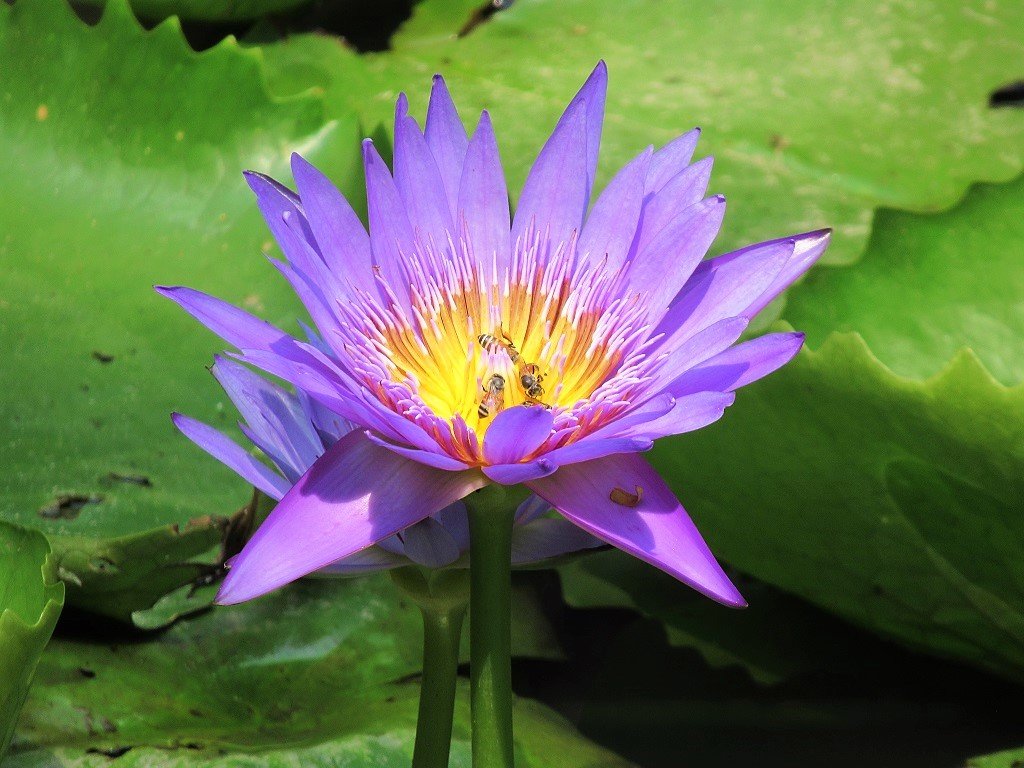
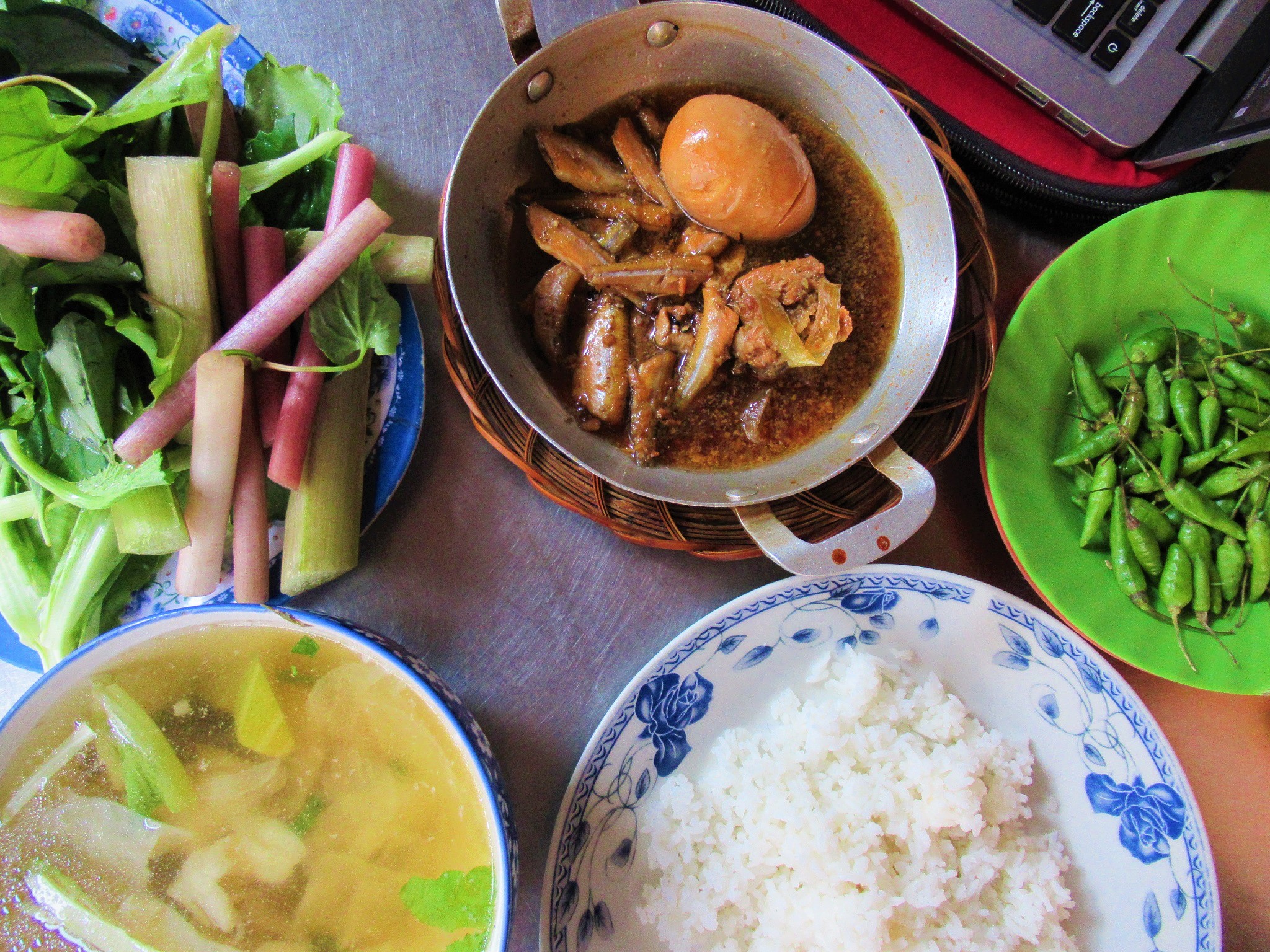
*Disclosure: All content on Vietnam Coracle is free to read and independently produced. Thảo has written this guide because she enjoys Vietnam’s edible flowers and wants readers to know about them. For more details, see the Disclosure & Disclaimer statements and About Page

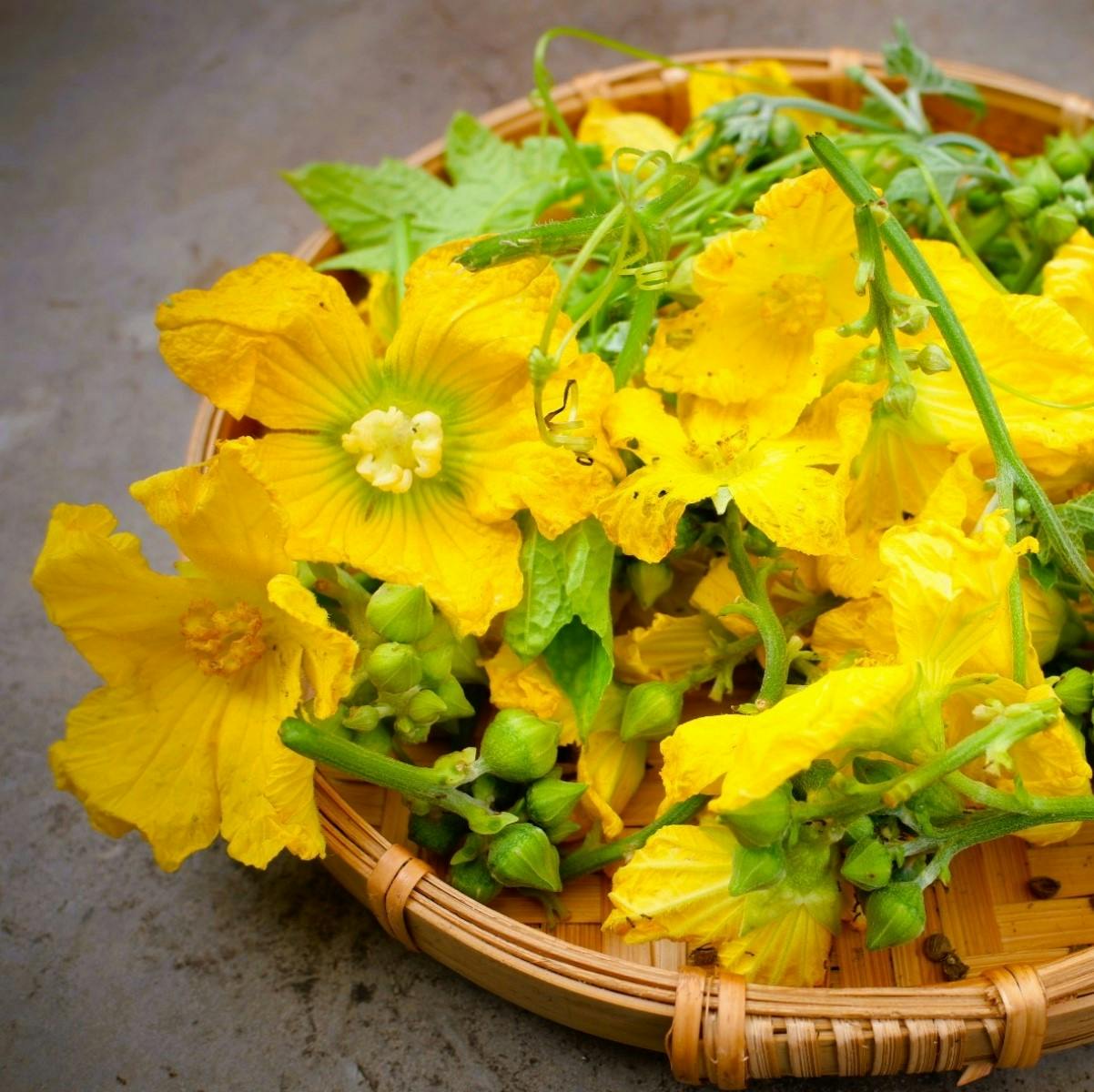
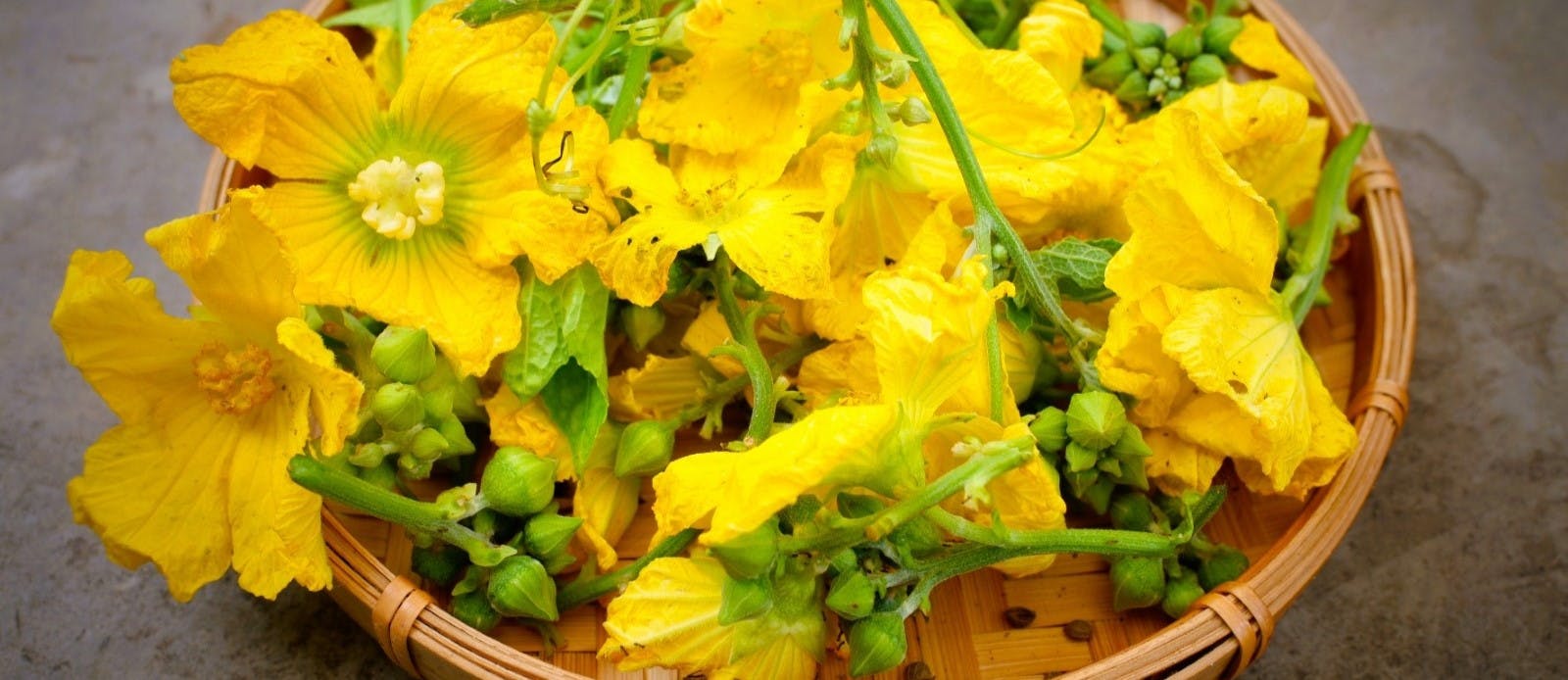

Thank for opening up the world of Vietnam to us. It is great knowledge shared. 🙏🏻
Thank you for your kind words, Don.
Best,
Tom
About the điên điển flower, commonly eaten in the Mekong Delta: isn’t it actually Sesbania bipinosa and not Sesbania sesban (Egyptian Riverhemp)? It’s also very common in neighbouring Cambodia (it’s called pka snaô there)
Hi Robin,
I am replying on behalf of Thảo, the author of this guide. According to our research, Sesbania sesban is the correct name for bông điên điển. For reference you can read this page.
Best,
Tom
Thank you! Maybe it’s wrong. Or maybe both species are used in cooking. Anyways it’s delicious!
Hi miss Thao
It’s a very nice article and I ‘ve loved the feeling of reminiscences through the essences of flowers, the Vietnamese spirit is so closed to mine.
Thank you for sharing and sure will go to visit your garden when go to HCM.
Hello,
Thank you, I’m glad you enjoyed this article. I’ll pass your comment on to Thảo.
Best,
Tom